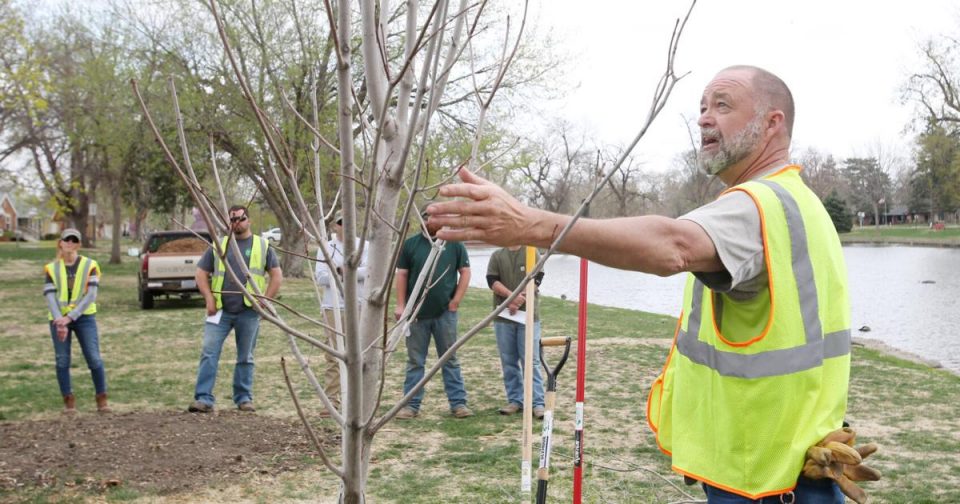Trees are kind of like children.
That was the assessment of Dave Wicker, a member of the Hastings Parks and Recreation Department maintenance crew and former member of the Hastings Tree Board. He spoke about proper tree maintenance during the Hastings Arbor Day program Friday afternoon at Heartwell Park.
“You’ve got to start them when they are young because if you wait until they are older it takes a lot more effort to correct them,” he said.
Wicker said it’s important to get rid of crossing branches to prevent rubbing and future damage, and also to prune at the base of a branch where the bark is thicker and has a greater chance to heal properly.
Wicker also advised not to do too much pruning right away.
Most nurseries and garden centers get their trees from a wholesaler that specializes in trees.
“So he’s going to have it pretty much ready to go for you,” Wicker said.
He spoke before a crowd of nearly 20 people.
As a member of Tree City USA for 32 years, Hastings is required to hold an Arbor Day program.
Bethany Cook, an instructor with Mid-Nebraska Individual Services, read facts about the history of Arbor Day and value of trees.
Ginny Skutnik, president of the Hastings City Council, read a proclamation declaring April 29, 2022, to be Arbor Day in Hastings.
Hassenstab introduced members of the Hastings Tree Board. He also awarded the stewardship award to former longtime tree board member David Glass, who wasn’t present because he moved out of state earlier this month.
Glass received his plaque at a previous tree board meeting.
A tree is planted each year as part of the annual Arbor Day celebration. This year it was a crimson king maple on the north side of Heartwell Park that was donated in memory of Gretchen Lainson, who died in June 2021.
This year is the 150th anniversary of both Arbor Day as well as Hastings and Adams County.
Jeff Hassenstab, director of Hastings Park and Recreation, said he heard from Lainson’s family that 50 years ago she was selling trees to plant in Hastings as part of the 100th anniversary.
“She was a big advocate for trees,” Hassenstab said. “We appreciate her efforts in our community.”
The crimson king maple grows to a height of 35-45 feet, spreading 25-30 feet.
“It is quite popular for its purple/green foliage throughout the summer,” Hassenstab said. “The leaves will turn brown, dark maroon or bronze in the fall before dropping.”
The crimson king maple is best used as a shade tree or as an accent to an area. Its seeds are a popular food source for birds.
Parks maintenance crew members planted the crimson king maple prior to the ceremony, but volunteers helped place mulch around the base of the tree.
Wicker said the crimson king maple will fit in well at Heartwell Park.
“I like anything that has a little variety,” he said. “As you look around the park you see a lot of blooming stuff: redbuds, crab apples, forsythia. (Crimson king maples) are grown more for the shade, but they do have that burgundy leaf to it, which is an eye draw. It’s a focal point of your landscape.”


